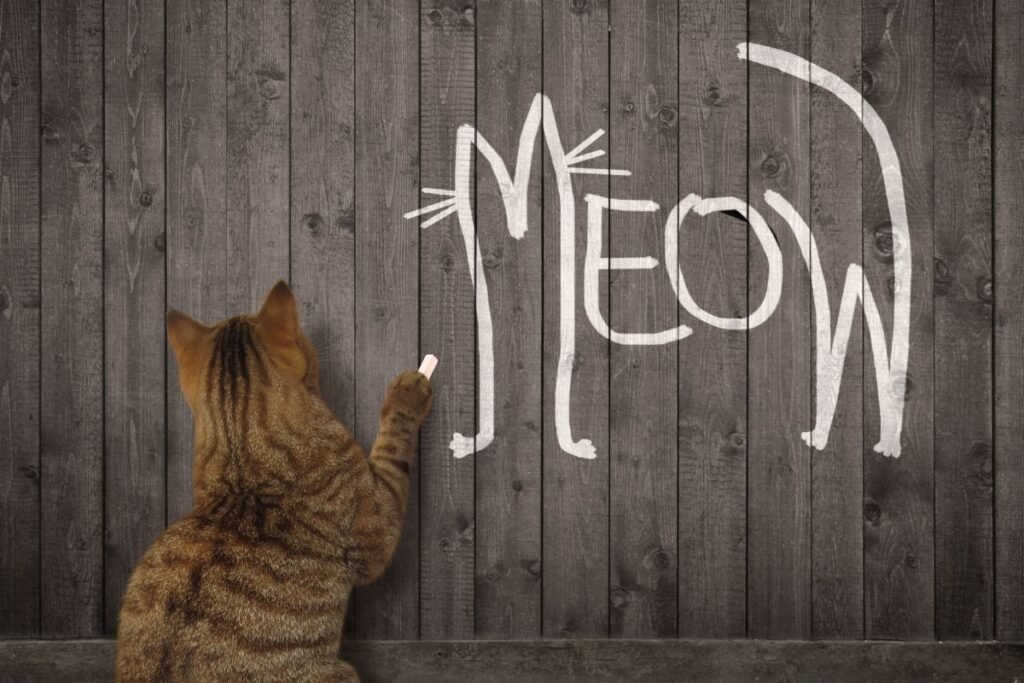Unlock the secrets of your cat’s communication with insights into their meows, body language, and scent marking behaviors.
Cats are known for their enigmatic personalities and subtle communication styles. Understanding the language of cats is not only fascinating but can also enhance the bond between you and your furry friend. Cats use a variety of vocalizations, body language, and even scents to communicate their feelings and needs. Let’s explore some of the key aspects of feline communication to help you better understand what your cat might be trying to tell you.
Vocalizations: More Than Just Meow
Cats vocalize for many reasons, and their “meows” can vary significantly in tone, pitch, and frequency. Each variation can indicate a different emotional state or desire:
1. The Short Meow
A short, standard meow might be a simple greeting. Think of it as your cat’s way of saying, “Hello!” when you walk through the door.
2. The Multiple Meow
A chain of meows is your cat’s way of saying they’re really happy to see you. This could happen when you come home after being away for a while or when it’s time for a meal.
3. The Mid-Pitch Meow
A meow that sounds more plaintive and longer in tone could be a request. Perhaps your cat is asking for food or attention.
4. The Low Meow
A low-pitched meow may express displeasure or an annoyance. If something is not to their liking, such as the cleanliness of their litter box or the presence of an unwanted guest, you might hear this form of communication.
5. The High-Pitched Meow
A high-pitched meow can indicate pain or distress. It’s important to pay attention to these sounds, as they might suggest a visit to the vet is needed.
Body Language: The Silent Signals
Cats speak volumes with their bodies. Here are a few body language cues that can help you understand your cat’s emotional state:
1. Tail Position
The position of a cat’s tail can tell you a lot. A tail that stands straight up signals happiness and confidence, while a tail tucked between the legs might indicate fear. A tail that flicks sharply can express irritation or anxiety.
2. Ear Movements
A cat’s ears are very expressive. Ears that are forward indicate interest and attentiveness. If the ears are flattened back against the head, your cat might be frightened or angry.
3. Eye Dilation
The dilation of a cat’s eyes can indicate their mood. Dilated pupils might mean your cat is playful or agitated, while constricted pupils may indicate anger or predatory instincts.
4. Kneading
Kneading, often referred to as “making biscuits,” is when a cat presses their paws in and out against a soft object. This behavior is a holdover from kittenhood when they kneaded their mother’s belly to stimulate milk flow. In adult cats, it usually means they are feeling calm and content.
Scent Marking: The Invisible Messages
Cats have scent glands in their cheeks, paws, and flanks, and they use these to mark territory or express comfort. When your cat rubs their face or body against you, they are not only showing affection but also marking you as “theirs.” Scratching in various places also helps them to establish their territory and stretch their bodies.
Understanding the language of cats can greatly enhance the relationship you have with your pet. By paying attention to their meows, body language, and scent-marking habits, you can gain insights into their needs, feelings, and overall well-being. Remember, each cat is unique, and getting to know your particular cat’s way of communicating will bring you closer and help you ensure they are happy and healthy.
The information provided about cat communication, including their vocalizations, body language, and scent marking, is based on general observations and research into feline behavior. While individual cats may vary in their specific ways of expressing themselves, the details shared here are widely recognized in the study of cat behavior and are commonly referenced by veterinarians and cat experts. So, the descriptions aren’t made up; they’re based on established knowledge about how cats typically communicate their needs and emotions.
Explore related topics
Check out our other posts for tips, tricks, and fun pet facts on our blog, and join our pet-loving community on Pinterest, Facebook, and Instagram. Let’s make every day an adventure for our furry friends!

